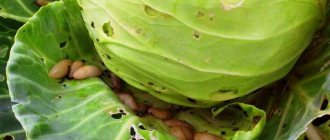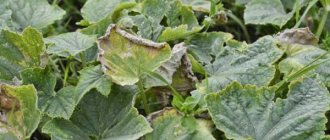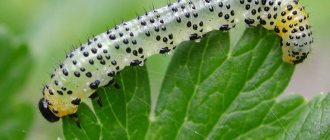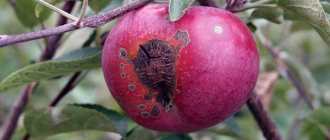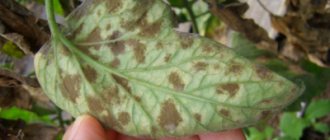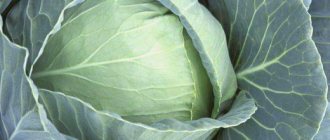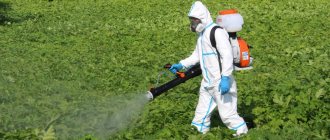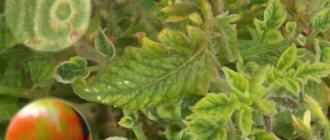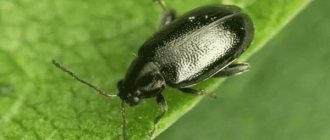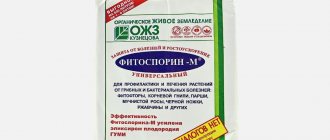Factors and reasons for the development of the disease
Many gardeners ask the question: why do such peculiar growths form on rhizomes? The risk of occurrence in the garden increases when seedling material is purchased from unverified retail outlets. Some unscrupulous sellers save preparations for treating soil and seedlings. Therefore, you can easily bring it to your site. And it's quite difficult to get rid of.
The spores of this parasite live in the soil for at least five years. At first he is well camouflaged. In the initial stages, the signs of the disease are minor, and the growths are difficult to distinguish from ordinary roots.
Gradually, the formations increase, replacing the root system of the crop. Spores are dangerous because they live in the ground for a long time. The pathogen feels especially comfortable in heavy and acidic soils, which do not contain organic matter and the necessary elements: zinc, boron, calcium, chlorine, potassium.
Infection can occur on post-harvest weeds. At the slightest suspicion, they must be burned. Failure to observe crop rotation also causes the development of the disease.
Clubroot on cabbage: description of the disease and signs of manifestation
Clubroot is one of the most common fungal diseases. Not only cabbage is afraid of him, but also all its closest relatives. Nodule-like thickenings and growths form on the roots of a diseased plant.
Nodule-like growths that appear on the roots are a clear sign of clubroot
At first, the new growths do not differ in color from a healthy root, but gradually they rot and by the end of the season a huge number of spores appear in the soil, which retain their vitality for five to six years. The pathogen feels especially good on heavy and acidic soils, which are poor in organic matter, potassium, calcium and microelements such as zinc, boron and chlorine.
The infection can also persist on post-harvest residues and weeds, so it is recommended to burn them if there is minimal suspicion of the presence of the pathogen.
Any plant from the cabbage family planted in an infected area provokes the germination of spores. The pathogen attacks the root hairs; the diseased bush loses its relationship with the soil, so it is easily pulled out of the ground.
Clubroot causes severe growth inhibition in adult plants
Risk factors for developing clubroot
Most often, clubroot enters the site through purchased seedlings. It is very difficult to detect signs of disease on a small seedling. He may look strong and healthy. If, upon careful examination, you find at least some thickening on its roots, then throw away such a sprout without regret: it is much easier to purchase new seedlings than to expose your plot to the risk of infection with this dangerous disease.
Seedlings affected by clubroot most often die. A diseased adult plant first develops a light purple tint to the leaves, then they turn yellow and wither. In this case, you can’t count on a harvest. In white cabbage, for example, even if a head of cabbage grows, it will be small and deformed.
Cabbage, the clubroot on which formed in the early stages, as a rule, does not form heads of cabbage
If the cabbage was infected at the seedling stage, this can be determined by the following sign: the growths will be concentrated on the main root. If new growths are found on the lateral roots, then the source of infection is the soil.
Particularly affected by clubroot are cauliflower, early varieties of white cabbage, as well as many Dutch hybrids.
The infection can enter the soil not only through infected seedlings. Other predisposing factors are:
- high soil acidity;
- adding plant remains of diseased plants to compost heaps;
- adding fresh manure;
- excessive soil moisture without loosening. On heavy soils, a crust quickly forms, which prevents air from reaching the plant’s root system;
- non-compliance with crop rotation.
The appearance of the disease
If wilting appears in the cabbage bed, despite proper care, you need to dig up the seedling and carefully examine it. The presence of characteristic formations on the roots indicates the presence of a disease. The root system affected by growths cannot fully develop and nourish the vegetable.
Diseased specimens stop contacting the soil and are easily removed from the ground. The resulting growths begin to rot. This is how cysts appear in the soil. Cabbage is affected by this parasite at any stage of development. Young plants are often susceptible to the disease. An acidic environment gives impetus to development.
At the initial stage, the foliage has a slightly purple tint, after which it becomes yellowish and the plant looks lethargic.
Signs of the disease
At the initial stages of disease development, most gardeners cannot diagnose the fungus on a vegetable crop, since the pathogen functions and develops on the root system. Therefore, the gardener continues to care for the plant, unaware of its infection.
In order not to encounter a fungal infection already in the last stages of cabbage clubroot and to start fighting it on time, you should study its main symptoms:
- Wilting of the lower leaves of cabbage.
- Numerous growths and swellings on the roots. They are especially noticeable on mature plants, their size ranges from a pea to a fist. It is difficult to see them on seedlings: they look like small lumps of soil.
- Depressed appearance of the crop, yellowing of the foliage, stunting of the head of cabbage.
- Gradual drying of the plant and death.
When the root system rots, the parasitic fungus produces a large number of new spores that go back into the soil and wait in the wings. Therefore, you should adhere to crop rotation and disinfect the soil.
How to Test for Clubroot Spores
Before planting cabbage, you need to test the soil for the presence of disease spores. Sow Chinese cabbage onto the problem area. The collection is carried out periodically, starting with sprouts that have the first leaves and until the head is set. If the crop is not sick and no growths on the roots are recorded throughout the entire growth period, then resuscitation was successful. If at least one light bead appears, the treatment is extended for another season.
See also
Planting, growing and caring for Chinese cabbage in open ground
Read
Factors that contribute to the development of fungus
Conditions that may cause the development of a microorganism on the site:
- increased soil acidity;
- adding fresh manure;
- presence of plant residues of infected crops;
- non-compliance with crop rotation;
- violation of care requirements: excessive watering, neglect of loosening.
Clubroot mainly enters the garden through purchased seedlings, so before purchasing, inspect the roots for seals.
Control measures
Methods and methods of control are ineffective in the final stages. You can try to save it by activating the development of additional roots. To do this, the head of cabbage is hilled high and watered intensively.
To get rid of the pathogen, dust the soil with lime during the digging process in the fall. But it is best to avoid planting cruciferous vegetables in this area.
It is useless to wonder how to treat a sick plant; it is impossible to cure it. All that remains is to disinfect the soil for future safe plantings.
Seed treatment
Before sowing, the seed material must be processed. This is done in the following ways:
- place in an immunostimulator;
- treat with hot water, leave for a third of an hour;
- prepare a 1.5% mustard solution and leave for 6-8 hours;
- soak in a solution of ascorbic acid for at least 16-18 hours;
- cold treatment, the ideal place is the refrigerator, the seeds are placed for a day.
If the seeds have clubroot spores, these methods will help disinfect them.
Soil treatment
If the area has been infected with this disease, the soil must be disinfected. It is also recommended to plant crops that can kill fungal spores: tomatoes, onions, potatoes, beets, garlic. In this way, the soil is restored in 2-3 years. Over the course of a season, combinations of plants can restore the soil, for example, tomato and garlic.
It is recommended to chop the beet tops, pour them with a preparation with microorganisms “Siyanie-1” and dig up the soil in the fall. It is advisable to make narrow beds. This helps prevent contamination of healthy soil when digging, reduce the area of soil contamination after rain or during watering.
Agrotechnical methods
Clubroot can be overcome and the soil can be treated using agricultural techniques. It is important to compensate for the lack of potassium and calcium components, to enrich the soil with zinc, chlorine, and boron. The specific gravity of humus can be increased by 2.5 times. Saltpeter will not harm the soil.
Watering is done very competently and carefully. Overmoistening and drying out negatively affects its condition.
Traditional methods
Folk remedies are most often used in a set of activities.
The following accessible and economically feasible methods are distinguished:
- treatment with Bordeaux mixture;
- add a small amount of wood ash to the hole, then water the plant;
- carry out irrigation with lime milk;
- loosening with enrichment of the soil with mineral fertilizers.
Measures to combat clubroot cabbage
If even one plant infected with clubroot gets into the garden, the disease will quickly spread. If you detect a diseased plant in a timely manner, then there is a chance to localize the infection and quickly clear the soil of it. To do this you need to do the following:
Recent Entries
5 working ways to use tar in the garden 7 indoor plants that help you get married even in adulthood Indoor plants that can bloom in trouble
- Remove the affected plant from the garden bed, dry it and burn it. Moreover, be sure to burn on a metal sheet, after dousing the plant with a flammable substance, for example, gasoline. The fire should be bright and smokeless. With the smoke of a low-burning fire, pathogen cysts can be dispersed throughout the area;
- select a separate tool for working on the infected bed;
- the infection can spread through the soil on shoes, so do not walk around the entire area until you finish collecting the affected plants. After work, wash your shoes thoroughly;
- keep the beds clean, remove weeds in a timely manner, especially from the cruciferous family.
If single specimens of diseased plants are found in a cabbage bed, then experienced gardeners advise destroying them, as well as removing some of the soil from the bed from the holes where the affected plants grew, and generously shedding the soil with a strong solution of potassium permanganate.
The above methods are most effective on narrow ridges with wide passages between them. In this case, clean and contaminated soil do not mix, and containment measures will be more effective. For several seasons, it is not recommended to plant cabbage and other crops susceptible to the disease in a problem bed. This should not be done in the neighborhood, since fungal spores can be carried over short distances by earthworms, slugs and other organisms, and spread with rain or irrigation water.
When using the method of narrow beds in the garden, a wide passage is left between them, which can be arranged using enclosing wooden formwork
If there are no host plants near the pathogen, the number of viable cysts decreases over time.
Other vegetables will grow successfully in an infested garden bed. Planting root crops should be avoided, since harvesting them can spread contaminated soil to other ridges. It is preferable to grow leafy or fruiting vegetables. Such a quarantine is necessary, but with its help it is impossible to get rid of clubroot on the site.
Soil treatment
If the spread of the disease in the area has become widespread, then it is necessary to treat the soil. One of the most effective ways to combat clubroot is based on the ability of some plants not only to resist the disease, but to cause accelerated death of pathogens. These healing plants include:
- potato;
- tomatoes;
- onion;
- winter and spring garlic;
- beet;
- spinach.
Tomatoes and potatoes can clear the soil of clubroot spores in three years, onions and garlic, as well as vegetables from the goosefoot family - in two. Mixed plantings of the above crops are encouraged. For example, a pair of tomatoes and spring garlic can destroy viable clubroot spores in one season.
Clubroot spore test
Before returning cabbage or its relatives to the garden, it is recommended to test the soil for the presence of infection. To do this, fast-growing Chinese cabbage is planted on the site and the plants are gradually dug up and carefully examined from the moment the true leaves appear until the head forms.
If you do not find any growths or suspicious beads on the roots of the pekinka, then the measures taken were effective and gave a positive result. Otherwise, growing the above-mentioned plants in problem beds must be continued.
What to do after treating clubroot
To prevent the spread of disease:
- do not plant cruciferous crops in this area; planting is done after testing the soil;
- carry out preventive work to prevent the spread of the disease;
- If possible, plant crops in this area for several seasons that are not susceptible to this disease.
Provoking factors
Since it is no longer effective to fight clubroot on cabbage after it appears, all measures must be taken to prevent it. Spores can enter the garden bed only with diseased seedlings and when contaminated soil or organic matter (compost, humus, manure) is added to the plot.
Related article:
Remedies for the Colorado potato beetle
Clubroot spreads especially quickly in favorable conditions, which include:
- warm (+18°C…+25°C) and humid (from 75%) environment;
- acidified heavy clay or sandy soil (spores develop worse in neutral soil, but die in alkaline soil).
Non-Black Earth regions with acidic, moist soils are most susceptible to contamination. Although spores reproduce well in too dry or depleted soil with a lack of micro- and macroelements.
The likelihood of clubroot appearing increases significantly in areas where several cruciferous crops are grown at once (for example, different types of cabbage, turnips, radishes, horseradish, mustard). As mentioned above, the pathogen parasitizing them can penetrate into neighboring beds with water, worms or soil insects.
Note to the gardener: Early and super early cabbage
What can be planted after clubroot affected cabbage
After harvesting the cabbage, the best growing option for the next season will be potatoes. It does not have pathogens similar to cabbage. Accordingly, the soil with the clubroot left in it after the cabbage does not pose a danger. In addition, potatoes serve as a kind of medicine that can destroy fungal spores.
In addition to this crop, it is recommended to plant garlic, beets or spinach. They are able to disinfect the soil in two seasons.
It is recommended to sow green manure plants. Winter rye is productive; in addition, it has a beneficial effect on fertility and increases soil aeration.
The causative agent of the disease
Clubroot attacks the root system of cruciferous crops, causing the formation of numerous putrefactive growths. This leads to the fact that the roots stop supplying the above-ground part with nutrients and water, so the plant stops developing and quickly dies. In this case, pathological formations grow, and over time they rot and become a source of a huge number of new harmful spores.
The causative agent of the disease is the pseudofungus Plasmodiophora brassicae Woronin. Being essentially a parasite, it does not develop without a “host”, but, remaining in the ground, retains its viability for up to 7 years. Clubroot spores do not penetrate seeds and are not airborne, but are distributed only in the soil along with insects, water and worms living in it. Therefore, infection occurs exclusively through the roots, after which the cells affected by the fungus begin to rapidly increase and grow.
Related article:
How to get rid of mole crickets using traditional methods
A plant can get sick at any stage of development. The later the infection occurs, the higher the likelihood of preserving the crop, since it is impossible to get rid of clubroot on cabbage, but you can only remove it along with the roots. But since spores are usually present in the soil even before seeds or seedlings are planted, the fungus most often affects young seedlings, which quickly die.
Interesting: Which cabbage is the healthiest?
Prevention of infection
It is better to prevent the disease than to treat the plants and the soil under them later. First, it is important to inspect the seedling material. The spores of the disease are not always visible visually, but with significant damage it can already be seen on the seedlings.
In addition, it is recommended:
- Hill up the plant and water it after feeding, this stimulates the development of a strong root system;
- destruction of the remaining stalks, which will prevent rotting;
- destruction of all plants affected by the disease, tools must be treated with disinfectants after work;
- timely destruction of weeds;
- remove diseased plants by burning them in a bright fire; if the fire just smokes, this can spread clubroot spores.
See also
50 best varieties and types of cauliflower with names and descriptions
Read
Seed preparation
In order to prevent the development of the disease, it is necessary to prepare seed material and carry out disinfection. There are several ways:
- Manganese solution. The most common way. Leave for half an hour and rinse with cold water.
- Heat treatment. Place the seeds in a liquid whose temperature is strictly between 48 and 50 °C. At temperatures above 50 °C the seeds will die, and below 48 °C it will not produce results. It is recommended to carry out the treatment in a large amount of water, measure the temperature with a thermometer, and, if necessary, add a portion of hot water. Place the seeds in a gauze bag and leave for 20 minutes.
- Garlic infusion. Pour 35 g of chopped garlic into 90-110 ml of water, place a gauze bag with seeds in it and leave for at least an hour. Then rinse and dry.
Soil disinfection
For preventive purposes, it is recommended to maintain acidity at an average level; the earth should not be under-oxidized or overly acidic.
For preventive purposes it is necessary:
- Disinfect frames in greenhouses or other wooden structures with lime milk. This is carried out until they are filled with soil.
- In the greenhouse, disinfect the soil with bleach 120-140 g/m2 every three years. Apply dry to moist soil after harvesting.
- Every 2-3 seasons, lime the soil to reduce acidity levels. Apply 270-310 g on light soils and 460 g on clay and loamy soils.
- Before planting, calcium cyanamide 30-32 g/m2 is added; it kills fungal spores.
What to put in the hole when planting
In order to prevent the development of the disease, dolomite flour should be added to the hole. You can replace it with ash, 1 cup per hole. You can also powder the bed with it after planting. These products reduce the acidity of the soil; they just need to be mixed with the soil. To enhance the effect, flour is combined with copper sulfate or boric acid.
It is allowed to apply complex insectofungicides, but their disadvantage is that a microdose is introduced into the hole, which is inconvenient to accurately calculate:
- "Trichodermin";
- "Glyocladin";
- "Mikosan";
- "Previkur";
- "Phytodoctor";
- "Planzir."
Treatments for clubroot when planting
Before sowing the seeds, colloidal sulfur 5 g/m2 is added 3 days to a depth of 50-60 mm. In the spring, before planting seedlings, disinfect the soil with Carbation. Use according to the instructions. You can water the soil with a sulfur solution, 48 g per 10 liters of liquid. Before planting, it is recommended to soak the roots of the seedlings in a Fitosporin solution.
Preventive measures
Since fighting clubroot on cabbage is not an easy task, you should worry about protecting the crop in advance by organizing proper care and not forgetting about preventive measures:
- When choosing cabbage seeds or seedlings for planting, give preference to kill-resistant varieties: Kilagreg, Kilaton, Nadezhda, Kilagerb, Tequila, Ramkila.
- Adhere to crop rotation and periodically plant plants in the garden bed, which leads to the death of the fungus. These are crops from the Pastel family: potatoes, eggplant, tomatoes, tobacco. They can eliminate all disputes within 3 years. Also, representatives of the Chenopodiaceae family: spinach and beets, will help clean the soil of microorganisms in just 2 years.
- Do not neglect preparing cabbage seeds before planting. Soak the material for 20 minutes in water at a temperature of 50 degrees, cool, dry and place in mustard solution (1.5%) for 6 hours.
- Before planting cabbage seedlings, treat the soil using a solution of Fundazol (0.1%) or a special mixture based on 300 g of copper sulfate, 300 g of slaked lime and 8 liters of water.
- Promptly remove weeds from the site, mainly shepherd's purse, field mustard, and colza. These members of the Brassica family are considered a haven for fungal spores during the winter season.
- Experienced gardeners recommend planting cabbage in narrow beds. This move will allow you to quickly localize the disease and clear the soil of the parasitic microorganism.
By observing these requirements, you can improve the health of cabbage, get an excellent high-quality harvest, and increase the keeping quality of heads of cabbage.
Knowing how to deal with clubroot on cabbage and protect your garden from the disease, you can ensure a rich harvest of healthy vegetables. A good result is possible only with strict compliance with all agrotechnical requirements of the crop for growing conditions. This will allow plants to actively and successfully resist fungal infection.
How to understand that cabbage has been affected by clubroot
Most often, clubroot affects young plants or seedlings. It is very difficult to see the signs of the disease by eye: the growths on the roots of the seedlings resemble ordinary lumps of soil. You can only pay attention to the unnatural lethargy of the seedlings, despite all the feeding and regular watering.
Pronounced signs of clubroot appear already in grown cabbage:
- cessation or slowing of growth;
- general withering;
- yellowing and drying of leaf edges;
- turning the head of cabbage on its side.
If you pull a head of cabbage out of the ground, then instead of a thin root system you will see spherical and oblong growths with open rotting wounds - this is a sign of the maturation of new spores.
What is clubroot?
Clubroot disease is caused by fungi of the genus Plasmodiophora brassicae. This pathogen affects not only cabbage species, but also related crops - radishes, daikon, turnips, turnips, rutabaga, rapeseed and others. The infection penetrates the roots of garden crops. As a result, bumps and thickenings form on them. It is in them that fungal spores multiply. An infected plant cannot feed normally, since the absorption of substances from the soil is difficult. If the gardener does not take action against clubroot, the crop will die.
Clubroot prevention
Since it is difficult to fight clubroot, gardeners pay a lot of attention to disease prevention. It is for this reason that many summer residents prefer to grow seedlings themselves. When buying seedlings on the market, there is a high risk of getting diseased plants, because signs of clubroot infection do not appear immediately.
Attention! Those who are going to use purchased seedlings need to do the following procedure - before planting in the ground, dip the plant roots in a Fitosporin solution for 2 hours.
Clubroot is not transmitted through seeds, but gardeners should still treat them before sowing so that the seedlings grow healthy and resistant to infections. To do this, the seeds are first poured with hot water (about 60 degrees), and then dipped in a slightly pink solution of potassium permanganate for 5–10 minutes. After washing, the planting material is treated with Epin or Zircon.
How to prepare the soil on a planting site to avoid clubroot?
The soil in the garden can contain fungal spores for a long time, so it is important to carry out the following procedures annually:
- in autumn, remove weeds and destroy them;
- deeply dig up the soil in cabbage beds with the addition of potato tops, beets and quinoa;
- acidic soil must be limed by adding dolomite flour and wood ash;
- when planting seedlings, 150 g of ash should be added to the prepared holes;
- It is recommended to water young plants with lime milk (0.5 liters of product for each bush).
Fertilizing plays an important role in preventing cabbage clubroot. Plants that receive all the necessary nutrients are more resistant to various infections. The crop requires the application of complex mineral fertilizer containing potassium, phosphorus, magnesium and zinc. An infusion of mullein or bird droppings is used as organic fertilizer.
Signs of defeat
The defeat of cabbage by clubroot begins with the roots, on which clearly visible white thickenings or swellings form. They can be of different sizes and different shapes. When cabbage is infected even at the age of seedlings, these thickenings are located on the main roots and are large in size. If the infection occurred already during the period of cabbage growth on the ridges, then clubroot growths are located on the peripheral roots and look like beads or icicles. By the end of the season, the thickenings become brown and begin to rot and collapse.
At the same time, many spores are released into the ground. They can stay in the ground for years, and as soon as a cabbage plant is planted nearby, they begin to germinate and penetrate the roots through the root hairs. In their tissues they multiply, merge together and infect neighboring tissues.
The above-ground parts of cabbage also suffer - due to malnutrition, the leaves wither, especially in hot weather, and turn yellow, the heads of cabbage grow small and soft or do not set at all. Young plants may die. Since lethargy and yellowing of leaves can be a sign of other diseases or violations of agricultural practices, clubroot can be accurately identified only by its characteristic root thickenings.
What is clubroot and why is it dangerous?
Clubroot is an infectious fungal disease that affects cultivated and wild plants of the Brassica family. It affects not only all varieties of cabbages, but also their relatives - radishes, white and black radishes, mustard, turnips, rutabaga, daikons, watercress, as well as wild representatives of this family - rapeseed, wild mustard and shepherd's purse, jarutka, wild radish, etc. Among cultivated cabbages, the most sensitive to it are cauliflower and cabbage of early varieties, as well as productive Dutch hybrids of different ripening periods. Cabbage can become infected with clubroot throughout the entire growing season, and not during any specific period.
The causative agent of clubroot cabbage is found in the soil. This is a fungus of the species Plasmodiophora brassicae. Once in the ground, it remains viable for more than 7 years, even if there are no host plants, and all this time the soil remains contaminated and dangerous for cabbage plants.
The danger of clubroot disease is that infected plants begin to wither, turn yellow and dry out. The head stops growing, becomes loose, and is already quite large and falls to the side. Plant growth and normal development stops. Naturally, one cannot expect a harvest from them. In addition, healthy cabbages can become infected from diseased cabbages, which can result in a total yield loss of up to 60%.
Advice from gardeners
Experienced gardeners know how to fight fungal disease and protect their crops from it forever:
- for preventive purposes, marigolds, spinach and calendula are planted next to cabbage;
- water the seedlings with lime milk (80 g of the substance is stirred in 1 liter of water) 2-3 days before transplanting them into open ground;
- Before planting seedlings, add 1 dessert spoon of calcium nitrate to each hole and mix it with the soil;
- Cabbage is grown in narrow beds, which makes it possible to localize the disease if necessary and quickly clear the soil of the pathogen.
Clubroot is a dangerous fungal disease that can completely leave a gardener without a vegetable harvest. Timely fight against the disease and compliance with preventive measures will help you cope with it and forget about its existence forever.
0
0
Copy link
Cabbage varieties resistant to clubroot
Not all types of cabbage suffer equally from the effects of the fungus. There are varieties and hybrids that are resistant to this disease. After restoring the soil to prevent clubroot, it is advisable to plant the following hybrids:
- early ripening: Kilagreg;
- mid-season: Kilagerb F1, Nadezhda, Tequila F1;
- late ripening: Kilaton, Ramkila F1.
Cabbage varieties resistant to clubroot:
- Moscow late.
- Ladozhskaya.
- Winter Gribovskaya.
- Losinoostrovskaya.
- Present.
- Harvest.
- Taininskaya.
Chinese cabbage has also distinguished itself by its hardy varieties. Among them, those resistant to fungus are: Latheman, Clapton F1 and Clarifry.
All of these species would be excellent choices for planting in soil where an outbreak of the disease has already been detected.
Clubroot cannot be ignored once it occurs. A fungal infection will not only destroy the crop, but will also spread throughout the entire garden, affecting other plants. By following all the rules of soil care and carefully preparing seeds and seedlings for planting, you can save the crop and reduce the risk of clubroot. If clubroot has already spread, you should not feel sorry for the infected crop - it is better to lose it in one season than to quarantine the entire area.
How to avoid bringing clubroot onto your property?
In the affected root of the plant, a huge number of pathogenic spores mature, which remain in the soil and remain viable for more than 15 years.
The spread of clubroot spores is facilitated by numerous insects living in the upper layers of the soil and the water cycle. The spores are even carried in the manure of animals that have been fed contaminated vegetables.
The clubroot pathogen can remain dormant for a long time. When cabbage is planted in such soil, its root secretions contribute to the awakening and germination of spores. They strengthen on the roots and begin to multiply, forming growths.
Moist, acidic soils are most favorable for clubroot fungus. On neutral soils, the fungus develops noticeably slower, and on alkaline soils with a pH of 7.2, its growth is blocked.
Fighting methods
For such a dangerous fungal disease as clubroot, control measures against the pathogen should primarily be aimed at preventing infection or the spread of infection. If the spores remain in the soil, then without a “host”, which can only be the root of cruciferous vegetables, they can live no more than 7 years. At the same time, the activity and viability of the parasite will gradually decrease. Therefore, the main, but also the most lengthy method of eliminating the fungus is compliance with the rules of crop rotation.
Related article:
Apple tree diseases and pests
For faster healing of the beds, chemicals are used. When the fungus infects the plantings shortly before harvesting, it is necessary to maintain the forks until they are fully ripe using folk remedies. In any case, if clubroot of cabbage is found on the site, control methods are determined depending on the presence and age of the plants.
Crop rotation
To destroy the fungal infection naturally, plants are planted in the infected area to accelerate the death of clubroot. These include:
- nightshade - capable of removing pathogenic microorganisms in 3 years (tobacco, shag and tomatoes are especially useful in this regard, but if desired, you can plant potatoes, eggplants or peppers);
- Chenopodiaceae - beets will destroy the fungus in 3 years, spinach and chard - in 2 years;
- Liliaceae - lilies and hyacinths will destroy clubroot in 2 years, onions and garlic - during the first year of planting.
Related article:
How to protect grapes and get a good harvest: 7 dangerous diseases and methods of their treatment
Joint planting of tomatoes and garlic shows high effectiveness in the fight against clubroot. They will completely clear the area of infection in one season. But it is not recommended to rush into planting cruciferous vegetables - to be on the safe side next year, you should plant the garden bed with tobacco, shag or beets.
Another category of plants that can fight clubroot are wild cruciferous crops, which, through natural selection, have developed resistance to the parasitic fungus. This includes field herbs such as zherushnik, jaundice, shepherd's purse, hickory, and sverbiga.
Folk remedies
Fighting clubroot with traditional methods is used in cases where the disease appeared at the end of the growing season. It will not be possible to completely get rid of the disease, but a significant part of the crop can be saved.
Related article:
How to get rid of fungus on wood
To do this, use the following recipes:
- Wood ash. Dilute 10 glasses of ash in 10 liters of water, leave for 2 days, then dilute with water in a ratio of 1:10. Pour 0.5 liters under each plant after normal watering.
- Organic fertilizers. Root feeding is carried out weekly with a solution of cow manure (1:4) with the addition of 0.02% ammonium molybdate, as well as yeast, compost or other organic matter.
- Lime. Dissolve 300 g of lime in 10 liters of water. 0.5 liters of solution is poured under each plant.
After treatment with any of the above products, high hilling is carried out to cause the growth of new roots at the base of the stem. This will ensure the supply of nutrients necessary for the ripening of the forks. It is also recommended to add compost and humus between the rows to stop the spread of clubroot.
Chemical and biological products
If cabbage clubroot is detected in the early or middle stages of plant development, it can be controlled with chemicals. But most fungicides cannot cope with this pseudofungus, so you need to choose drugs with the appropriate spectrum of action. These include:
- "Alirin-B"
- "Glyokladin"
- "Previkur"
- "Topaz"
- "Trichodermin"
- "Fitosporin-M"
- "Fundazol".
Related article:
Why can cucumbers taste bitter?
It should be borne in mind that all of these remedies will not cure plants or destroy the fungus, but will only stop its reproduction.
